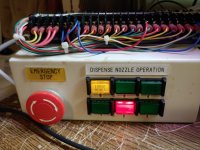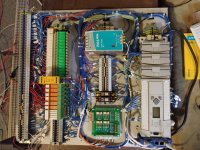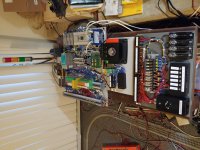mikeexplorer
Supporting Member
OP
Off but related topic, if you are using an AC/DC transformer to control the trains, you can connect the AC side of it to a PowerFlex 4 series drive and control the speed. I was surprised at how well it worked and how smooth it was.
Lionel trains use an AC transformer output for speed. I modified the Lionel transformer so I can input a 0 - 3.3VDC to the throttle control. The analog output is 0-10VDC so I made a voltage divider so the output cannot exceed 3.3VDC to the transformer.
Mike






